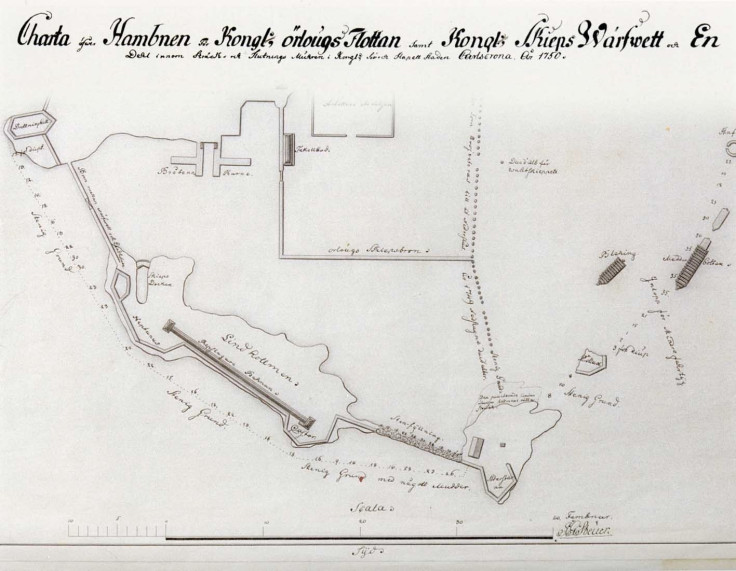300-year-old shipwreck tells the story of a bloody war between Sweden and its neighbours
The Blekinge is thought to have sunk in 1713, at the height of Sweden's war with Russia and its allies.
Marine archaeologists in Sweden have found the wreckage of an 300-year-old warship on the seabed, close to the naval port of Karlskrona. The vessel, known as the Blekinge, is thought to have roamed the sea in the late 17<sup>th century and to have been used in battles against Denmark and Russia.
The Karlskrona naval base was built in the aftermath of a war between Sweden and neighbouring Denmark – the Scanian War which took place between 1675 and 1679. King Charles XI of Sweden wanted a naval base that would have a close approach with Denmark, in case of future conflicts.
"After the war, the king decided to build a new naval base that would be easy to protect in open sea and this is in the south of Sweden, not far from Denmark that they settled. The Karlskrona Naval Base was one of the largest ever constructed and it remains in use today", Jim Hansson, the curator of the archaeology unit at the Swedish National Maritime Museums told IBTimes UK.
The ancient shipwreck was found by Hansson and his team of marine archaeologists three days before Christmas 2016, after they received indications from the Swedish Navy that a wreck was localised outside the Karlskrona harbour.
The researchers also used historical maps that were used in the past to plan for the construction of the naval base to help them locate the remains of the vessel.

The discovery is very important because the Blekinge is believed to have been the first ship constructed at the Karlskrona shipyard.
This ship was built in 1682 and part of the fleet that went to war against the Danes and the Russians at the beginning of the 18th century – the Great Northern War – which eventually led to the demise of the Swedish Empire and the emergence of Russia as a dominant power.

The ship is thought to have been 153 feet long (45 metres) and to have had up to 70 canons. These features are very similar to that of another famous Swedish shipwreck, now taken out of the water, known as the Vasa.
There is historical evidence that the vessel sank in 1713, but it is not clear whether this was done intentionally or whether it was an accident. "During the war with Russia and Denmark, the economic situation in Sweden was dire. Construction of the base at Karlskrona had to stop. My hypothesis is that the ship was downed on purpose so that its canons could be used on a sort of canon barge, to defend Karlskrona", Hansson explained.

Investigations to learn more about the ship's history have just started. Although the Blekinge is not entirely intact, the archaeologists hope to conduct small-scale excavations soon to uncover a whole deck level which they believe is buried below layers of sediments. They also hope to analyse the ship's structure to understand how warship styles evolved over the years to make way for new war tactics.
© Copyright IBTimes 2025. All rights reserved.






















